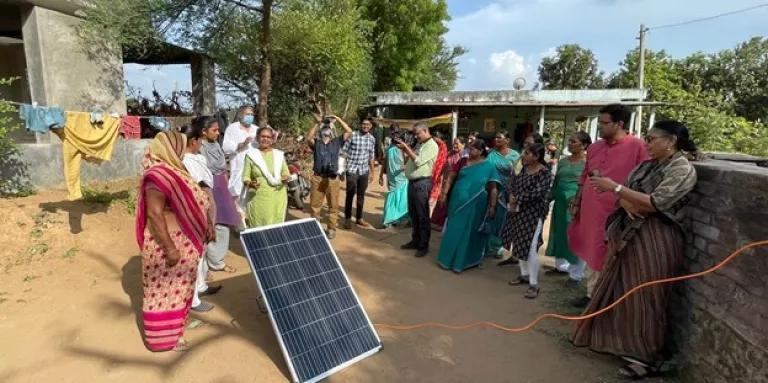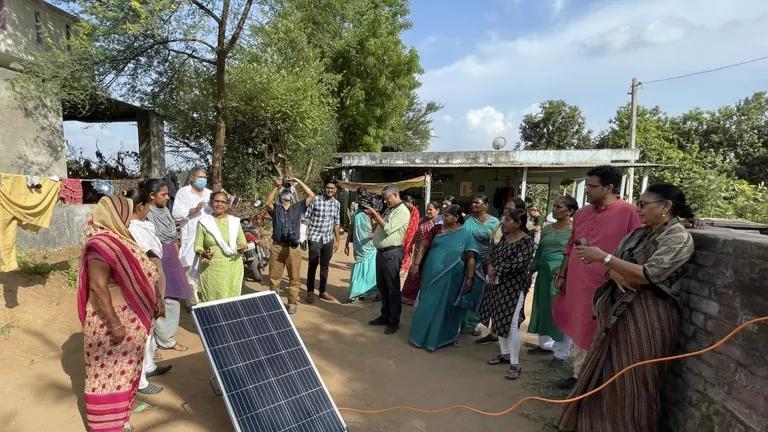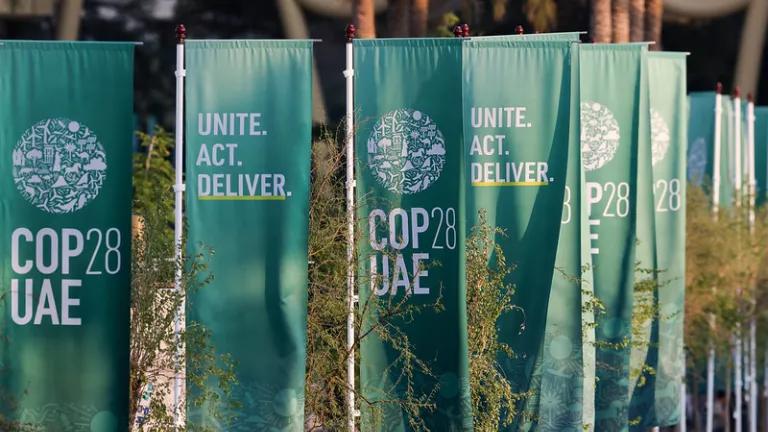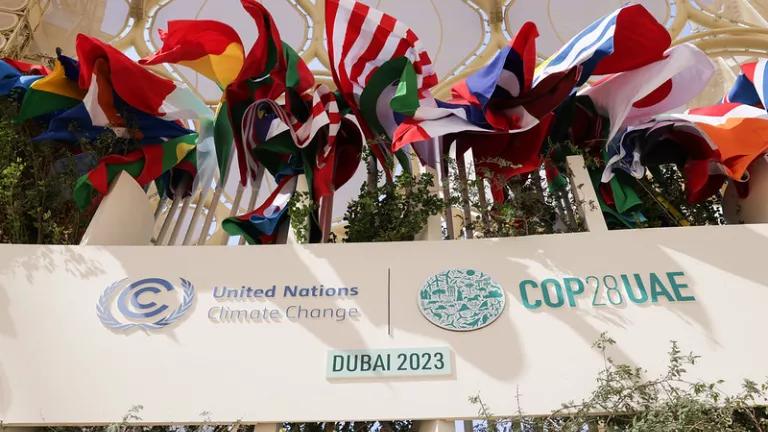Jobs and Skilling: Training for the Clean Energy Transition
Job creation, skill development, clean energy expansion, and economic development are top priorities—globally, for the government of India, as well as for most of India's provincial governments.
Guest Blog by Upendra Tripathy
Several years ago, as Secretary of Ministry of New and Renewable Energy (MNRE), I visited a former Delhi thermal power plant that had been converted to a solar park. While visiting, I learned that software repair of one of the solar park’s panels had been delayed several days. The reason for the delay was surprising - the mechanic had to come to Delhi from Chennai but had a fever. A similar situation presented itself shortly thereafter when I visited the National Institute of Technology, Calicut - an electrical engineering professor recounted how he had to wait for a repair mechanic to come from Bengaluru after a vital component of his rooftop solar failed. Over a cup of tea, he remarked, “if we could only have a system like Ola or Uber for solar mechanics who could set things right in no time!”
The dream of a simple software application, where citizens can address installation and maintenance issues for energy applications quickly and easily, is just one of many that need to be realized as countries set clean energy transition goals, such as India’s work toward 500 gigawatts (GW) of non-fossil fuel electricity generation capacity, including 450 GW of renewable energy, by 2030 and net zero emissions by 2070.

Hariyali Green Villages workshop in Gujarat
NRDC and SEWA, 2022
Investment in Green Skilling is Needed to Realize the Enormous Potential for Green Jobs
An effective worldwide clean energy transition needs to include green skilling across more sectors and requires proper near and long-term planning. Job creation, skill development, clean energy expansion, and economic development are top priorities—globally, for the Government of India, as well as for most of the country’s provincial governments.
India’s shift to a net zero economy could contribute more than $1 trillion in economic opportunity by 2030 and $15 trillion by 2070, and create 50 million jobs by 2070, according to the World Economic Forum. India needs to continue to invest in a widespread trained workforce to support a clean and circular economy. In the nearer term, a report by Council on Energy, Environment and Water (CEEW), Natural Resources Defense Council (NRDC), and Skill Council for Green Jobs (SCGJ) provides seminal analysis on India’s clean energy work force. The report finds that India achieving its 2030 renewable goal could potentially create about 3.4 million jobs in the wind and on-grid solar sectors, and a workforce of about one million could be employed to take up these jobs.
Initiatives Across India to Create a Green Workforce
The Government of India launched SCGJ in 2015 to promote skills for green business industries and integrate environmental awareness into job training across skilling programs. SCGJ’s partnership with the International Solar Alliance (ISA) plays an important role in building green banking skills among several bankers of ISA member countries, which could expand to other sectors. Since its establishment, SCGJ, has assessed/certified/trained around 1,07,000 trainees in renewable energy and their network of training partner covers almost the entire length and breadth of the country, and it has affiliated over 500 training institutions.

Sectoral focus of India’s SCGJ
MNRE, with support from the National Institute of Solar Energy, successfully established a scheme in 2015 to skill 57,000 youth as Surya Mitras (“Friends of the Sun”). Since then, similar programs, Vayu Mitras and Varun Mitras, have emerged to provide skilling in wind and agricultural solar pumping, respectively. Provincial and local governments can accelerate green skilling and the transition to net zero. For example, the government of Odisha has developed a "Skilled in Odisha" initiative with the involvement of private sector and industry leaders for the grassroots level implementation of skilling projects. The Association of Renewable Energy Agencies of States could coordinate and aggregate the demand and supply of goods and services, including green skilling, across states.
Green Skilling Best Practices from The Republic of Korea, The Philippines, Germany, and Scotland
The Republic of Korea’s Green Growth Committee coordinates policies related to skills development formulated by various ministries. The Committee uses diverse policy measures to address initial mismatch between supply and demand of green skills. The Committee provides coordination across the public and private sectors and identifies and monitors new and emerging green occupations. Businesses in the country that provide green training can apply for government subsidies for training costs and employee wages during the training period. The government provides incentives when the reskilling programs are conducted in partnership with universities, non-governmental organizations, or local entities.
The Philippines Green Jobs Act of 2016 is specifically designed to generate, sustain, and incentivize green jobs. It promotes training for green jobs by mandating the appropriate Commission and Department develop and implement curricula to support the skills and knowledge requirements of a green economy. It tasks the appropriate Commission to develop training regulations and qualifications frameworks to facilitate the certification of skilled and professional green manpower. The Green Jobs Act provides specific financial incentives for green job creation, including tax deductions for skills training, research and development for green jobs, and tax-free imports of capital equipment that would be used directly and exclusively to promote green jobs.
Germany’s industrial heavyweights are teaming up to retrain workers in areas such as software and logistics to fill a growing skills gap and avoid layoffs among workers of all ages as the economy shifts to clean energy and online shopping. Major companies, ranging from auto suppliers to industrial firms have agreed to coordinate on redundancies at one firm and vacancies at another, training workers to move directly from job to job.
The Scottish government is ensuring a just transition with a Transition Training Fund, which offers grants for the retraining of oil and gas workers who have lost their jobs or are at risk of redundancy.
Recommendations to Support India’s Clean Energy and Net Zero Workforce Transition
Bringing clean energy to remote areas and including women are critical to India reaching its climate and sustainable development goals. NRDC, Self Employed Women’s Association (SEWA), and Government of Gujarat are facilitating equitable gender access to clean energy and technology in Indian villages under the Hariyali Green Village Plans and are also developing a training tool for a host of DRE technologies for rural households. Experience from villages indicates that limited capacities to repair and maintain clean energy assets and the lack of a skilled workforce are persistent challenges to widespread clean energy adoption. Currently most training or skilling centers are in the capital city or cities with higher population densities. Interested candidates from rural areas usually attend skill trainings at an urban location. This locational divide also prevents effective participation by women candidates. This type of skewed distribution of training infrastructure prevents women and rural youth from effective participation.
A clean energy economy will need full participation by India’s academic institutions to maintain and improve India’s competitiveness in the future. Integrating skill training with academic curriculum in schools, colleges and universities is critical. India’s 2020 National Education Policy is a good example for this. Such integration will help create an efficient workforce particularly in rural and semi urban areas, which would facilitate community-level clean energy transitions. It is important to regularly update the skilling curriculum through periodic industrial engagements to bridge the skill gap and ensure availability of a skilled workforce. Workplace learning opportunities, such as apprenticeships or short-term placements, should also be integrated into technical and vocational education and training programs to provide learners with real-world learning experiences. Green jobs plans should include under-educated youth, ensure women’s inclusion, and connect trainees to job platforms in existing training and skilling institutions, such as industrial training institutions of the Ministry of Skill Development and Entrepreneurship. This could provide for promotion of rural skill development programs to take the transition closer to the community. Virtual and remote workshops can supplement in-person trainings. Clear inter-ministerial coordination in green training and skilling is key to its success and sustainability.
Reskilling and upskilling measures will be crucial as well to ensure a just transition. This requires identifying transferable skills the conventional fuel workforce can use to transfer to a clean and net-zero economy, establishing a well-funded retraining program, regularly updating the skilling curriculum, and ensuring a living wage for workers during the retraining period.
Need for Global Coordination
For a worldwide net zero transition there needs to be global coordination on green skilling and training. Multi-lateral organizations can aid in the sharing of best practices, knowledge, and technology for training and skilling a clean energy workforce. The regional disparity or gaps in the availability of a green workforce in various regions in India applies to the various countries in the world as well. Multilateral agencies can help identify these disparities and gaps and share best practices and resources. The regional sharing of online resources and platforms will go a long way in facilitating greening of the workforce.
The adequate allocation of financial resources, both by the private and public players, is essential to have a green workforce available for countries to meet their clean energy and net zero targets. This should be recognized by multilateral banks, bilateral agencies, multilateral funds, and even pension funds. A greater allocation of global resources dedicated to skilling and training is needed and national-level governments must recognize the importance of funding green training and skilling.
Clean energy jobs can greatly improve livelihoods, enhance gender parity, build climate resilience, and support national clean energy and employment goals, all at the same time. However, skills shortages could potentially stall the transition to clean energy, especially in developing countries.
The opinions expressed in the article are personal to the author.
Upendra Tripathy is the former Director General, International Solar Alliance, former Secretary, MNRE, Government of India. He also currently advises NRDC on global climate and clean energy policy.
Jessica Korsh helped with the research and writing of this blog. She is a climate health expert working as a consultant with NRDC.




